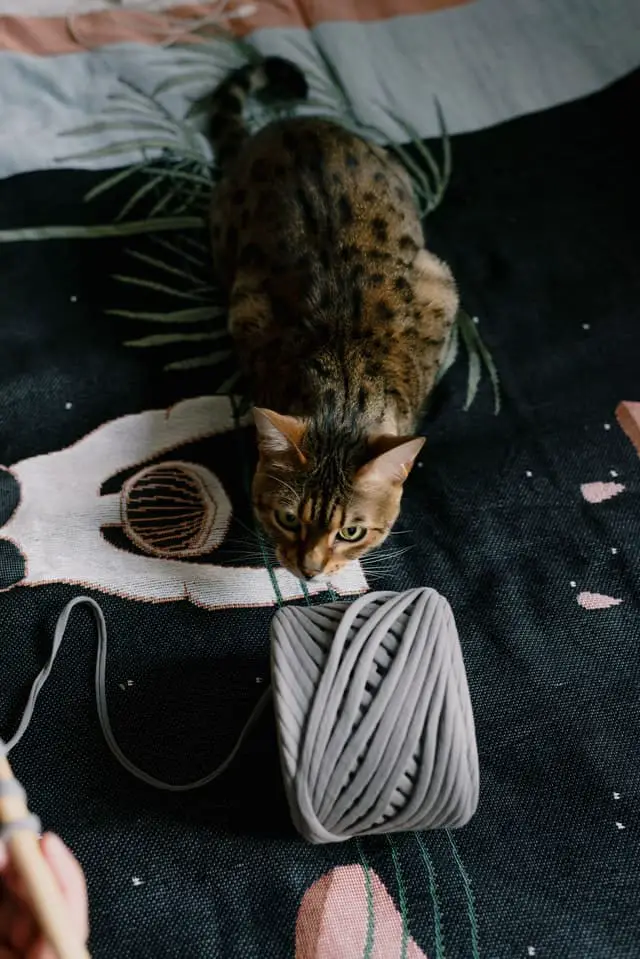
The Viverral cat is a little known cat, its scientific name is Prionailurus viverrinus and it is not a cat of those we are used to keeping at home, on the contrary, it loves freedom and loves…. to fish! It has long legs and a short tail, its dimensions are those of a medium-sized feline, let’s see how it behaves in its natural environment, in its habitat which obviously must include a mirror or a stream.
Viverral cat: characteristics
The tail of the Viverral cat is maximum 30 cm long, the animal itself, including the tail, measures 70 or 80 for a total weight that can vary between 8 and 12 kg. It is a slender and agile animal, it must be agile and fast to catch fish, as it loves to do so much.
Its head has an elongated shape but the ears are very small and rounded, they are not seen much, they are almost hidden. The hair of the Viverral cat is very soft but opaque, it is not shining and can take on different colors.
We can find brown or gray specimens, with brown shades on the back, usually on the belly the color becomes lighter while on the legs, a little darker, everywhere it is dotted, it shows small spots and not too bright colors. The spots form a kind of texture made of longitudinal streaks that are evident especially on the back and sides. The tail is decorated with dark rings on a lighter background in an almost uniform way.
The limbs of the Viverral cat are slender and end with agile feline paws, equipped with claws that are not completely retractable. As a perfect fishing animal, this feline has webbed front feet.
Viverral cat: price
The Viverral cat is not an animal to be kept at home and tamed, it is difficult to give it a price and one also wonders why to buy it and then end up removing it from its natural habitat and distracting it from its main activity.
This feline still leads a mysterious life for the man who does not yet know exactly his intimate habits. The character it shows off is aggressive and wild, so you are not very tempted to learn more, on the contrary!
For now we can say that the kittens of this breed have a fluffy coat that disappears once they are adults, the only specimens of Viverral cat that we can imagine keeping at home are those that get used to our presence from an early age.
Viverral cat: pictures
The Viverral cat does not have the appearance of a domestic cat and you can see from its body that it is destined to be and remain free. Fascinating is his fur but even more fascinating is seeing him in action when he is near a watercourse and has to get lunch or dinner.
Viverral cat or fisherman cat
Most of the felines we know prefer to carry out their activities at night but this is not true for our Viverral cat which cannot be defined in all respects as a nocturnal animal. If you go in search of some specimens of this cat in the wood during the day you will find them, you can see them around in search of food, in the undergrowth of the jungle but we do not advise you to approach them because they will not much like interacting with us. They are irascible animals and, if injured, even aggressive.
There are bad rumors about the Viverral cat, for example the inhabitants of the Malabar region, in India, say that it is this animal that is responsible for some disappearances of children in the area. Most likely this cat does not know anything about it but this urban legend makes us understand how good blood does not flow between man and the Viverral cat that approaches the villages it finds but to get food, certainly not to make friends.
In addition to fish, he can also eat freshwater molluscs that he finds in marshes and streams, he also likes frogs and small reptiles.
Viverral cat: habitat
Already by observing the body of the cat we are describing we should immediately understand how it is not destined to stay in our apartments to laze but that it prefers to be free, in the open air, a predator like other cats other than our living room cats. The webbed fingers, snappy legs and elongated muzzle demonstrate this. We find the Viverral cat in areas far from Italy, especially in some areas of tropical Asia such as Nepal, Pakistan, Burma, Thailand, southern China, Indochina.
We talked about India and here too we can meet it but only in some regions, in others not, on the other hand we are talking about a very large country that includes different climatic zones, not all suitable for welcoming this cat. In general, this animal looks for environments with large forests and humid climates, perhaps even with reeds or marshes, to live at its best, loves estuaries and coastal mangroves very much and does not have problems of height since in the Himalayas it meets up to 1500 m of altitude.






